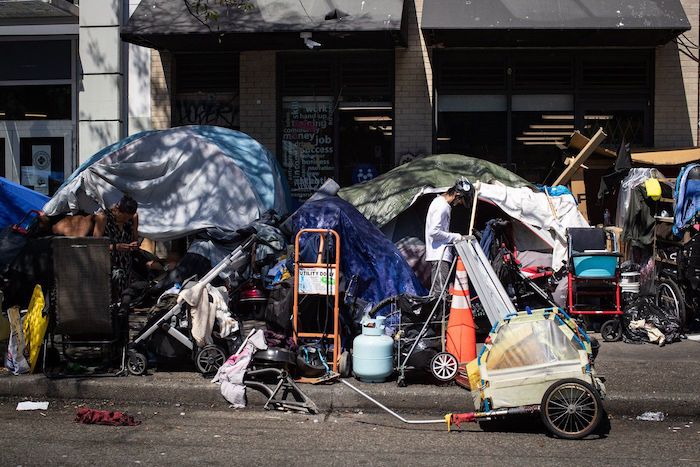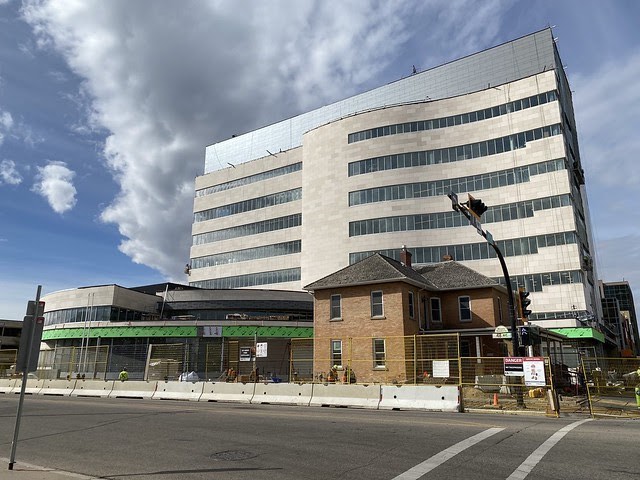Alberta
‘The saving grace for agriculture’: Farmers look to irrigation amid climate woes
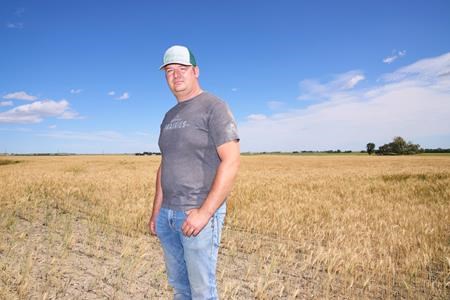
CALGARY — Sean Stanford’s wheat farm just south of Lethbridge, Alta. falls within the far left corner of Palliser’s Triangle — an expanse of prairie grassland encompassingmuch of southeast Alberta, a swath of southern Saskatchewan, and the southwest corner of Manitoba.
The area is named for explorer Capt. John Palliser, who in 1857, famously declared the entire region a wasteland — so hot and arid that no crops would ever grow.
More than 160 years later, with parts of the prairie provinces suffering through another summer of drought conditions, Stanford’s farm is certainly dry.
“I think we’ve had three inches of rain since we started seeding. It’s been pretty dismal, honestly,” he said in an interview in July.
But Stanford is growing crops, thanks to a series of small sprinklers, attached to a large pipe and powered by an electric motor that disperse water from a nearby irrigation canal over some of his fields.
“Hopefully this fall I’m going to put up a little more irrigation on a couple more fields of mine,” Stanford said, adding he expects his non-irrigated, or dryland, acres to yield about a third of what his irrigated acres yield this year.
“You’re able to mitigate your risks a lot more. Moisture, in my mind, is the No. 1 driving factor in making a crop or not.”
Drought insurance
The economy of southern Alberta would not exist as it does today without irrigation. As early as the late 1800s, public and private investors began to build a vast network of dams, reservoirs, canals and pipelines that opened the area up for settlement and turned John Palliser’s so-called wasteland into a viable farming region.
According to the Alberta WaterPortal Society, there are now more than 8,000 kilometres of conveyance works and more than 50 water storage reservoirs devoted to managing 625,000 hectares of irrigated land in the province.
And while that’s just over five per cent of the province’s total agricultural land base, it accounts for 19 per cent of Alberta’s gross primary agricultural production. Farmers in irrigation districts are able to produce high-value, specialized crops such as sugar beets and greenhouse vegetables.
“There are places that we simply wouldn’t have an agriculture industry if irrigation wasn’t happening — parts of the province are so dry that we wouldn’t be growing anything,” said Richard Phillips, general manager of the Bow River Irrigation District, which owns and operates several hundred kilometres of earth canals and water pipelines, as well as several reservoirs, in the Vauxhall area southeast of Calgary.
“We certainly wouldn’t be growing the crops that are being grown.”
In drier-than-normal years — like the one southeast Alberta is experiencing right now — irrigation is often the only thing standing in the way of full-fledged agricultural disaster, Phillips added.
“If it’s a drought year, dryland produces next to nothing, whereas the irrigated areas are still producing excellent crops,” Phillips said.
“It’s great drought insurance, if you want to think of it that way.”
A growing need
According to Agriculture and Agri-Food Canada’s most recent drought monitor report, 76 per cent of the country’s agricultural landscape is either abnormally dry or experiencing moderate to severe drought this summer.
Some farmers, depending on the region, are dealing with their third or even fourth consecutive year of drought — with 2021 being an exceptionally bad year that saw production of some crops in Canada fall to their lowest level in more than a decade.
That’s part of the reason behind a recent push to modernize and expand irrigation infrastructure in this country.
In Alberta, in 2020, the province and the federal government through the Canada Infrastructure Bank announced a $932-million project to rehabilitate older irrigation equipment in the province, as well as construct or enlarge up to four off-stream irrigation storage reservoirs.
Saskatchewan has also announced a $4-billion project to double the amount irrigable land in the province.
Agriculture Canada predicts that changes in temperature and precipitation patterns due to climate change will increase reliance on irrigation and water-resource management in years to come — most notably across the Prairies and the interior of British Columbia, but “also in regions where there has not traditionally been a need to irrigate.”
Jodie Parmar, head of project development for Western Canada with the Canada Infrastructure Bank, said even Ontario and some of the Atlantic provinces have expressed interest in exploring irrigation projects recently.
“When I engaged in 2020 with provincial governments, in Western Canada in particular, what I heard from them was the need to focus on agriculture and agri-food,” Parmar said.
“And within that sub-sector, irrigation was their top ask.”
The limits of irrigation
Parmer said irrigation can not only be used to bring water to areas that don’t have enough, it can also improve the usage of the water that is available.
With climate change, for example, glaciers high in the Rocky Mountains are melting earlier in the season — and not at the time of year when farmers actually need the resulting runoff water. With irrigation, the water from those early-melting glaciers can be diverted and harnessed in reservoirs to be used for agriculture when it’s actually needed.
But not everyone believes irrigation can solve all of agriculture’s woes — at least, not without a price.
Even with effective water use management, there’s a limit to how much water can be drawn from a single source — and a limit to how much expansion of irrigation the public will tolerate, said Maryse Bourgault, an agronomist at the University of Saskatchewan
“In Saskatchewan, (advocates) talk about Lake Diefenbaker being used for irrigation. But Lake Diefenbaker is also very much involved in tourism,” she said.
“So how will the general public feel about us draining Lake Diefenbaker for irrigation?”
Bourgault added that over-irrigating can also raise the water table of the soil, and when that water evaporates, it leaves salts behind. She said in parts of the world, landscapes and ecosystems have suffered long-term damage.
“So I don’t believe (that it is a solution),” Bourgault said.
“I think at some point you’re going to overdo it. Even if you have the best management, at some point, nature happens.”
Agricultural lifeline
Irrigation is currently responsible for about 70 per cent of freshwater withdrawals worldwide. According to the Princeton Environmental Institute, about 90 per cent of water taken for residential and industrial uses eventually returns to the aquifer, but only about one-half of the water used for irrigation is reusable.
The remainder evaporates, is lost through leaky pipes or otherwise removed from the water cycle.
Bourgault said instead of expanding irrigation, farmers should be seeking to mitigate the effects of climate change through improved crop genetics and alternative farming practices like cover cropping, which can reduce the amount of moisture lost through evaporation.
Still, for farmers like Stanford, who have spent much of this past summer anxiously watching heat-shimmering skies for any hint of rain, irrigation is nothing less than a lifeline.
“If they could get some irrigation acres opened up all the way to the Saskatchewan border and beyond, that would be a huge benefit,” Stanford said.
“To have more moisture, if it’s not going to rain anymore around here, is going to be the saving grace for agriculture in this area.”
This report by The Canadian Press was first published Aug. 13, 2023.
Amanda Stephenson, The Canadian Press
Alberta
Low oil prices could have big consequences for Alberta’s finances
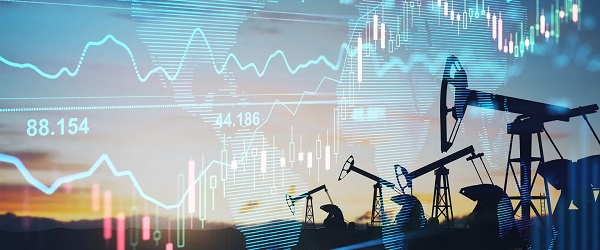
From the Fraser Institute
By Tegan Hill
Amid the tariff war, the price of West Texas Intermediate oil—a common benchmark—recently dropped below US$60 per barrel. Given every $1 drop in oil prices is an estimated $750 million hit to provincial revenues, if oil prices remain low for long, there could be big implications for Alberta’s budget.
The Smith government already projects a $5.2 billion budget deficit in 2025/26 with continued deficits over the following two years. This year’s deficit is based on oil prices averaging US$68.00 per barrel. While the budget does include a $4 billion “contingency” for unforeseen events, given the economic and fiscal impact of Trump’s tariffs, it could quickly be eaten up.
Budget deficits come with costs for Albertans, who will already pay a projected $600 each in provincial government debt interest in 2025/26. That’s money that could have gone towards health care and education, or even tax relief.
Unfortunately, this is all part of the resource revenue rollercoaster that’s are all too familiar to Albertans.
Resource revenue (including oil and gas royalties) is inherently volatile. In the last 10 years alone, it has been as high as $25.2 billion in 2022/23 and as low as $2.8 billion in 2015/16. The provincial government typically enjoys budget surpluses—and increases government spending—when oil prices and resource revenue is relatively high, but is thrown into deficits when resource revenues inevitably fall.
Fortunately, the Smith government can mitigate this volatility.
The key is limiting the level of resource revenue included in the budget to a set stable amount. Any resource revenue above that stable amount is automatically saved in a rainy-day fund to be withdrawn to maintain that stable amount in the budget during years of relatively low resource revenue. The logic is simple: save during the good times so you can weather the storm during bad times.
Indeed, if the Smith government had created a rainy-day account in 2023, for example, it could have already built up a sizeable fund to help stabilize the budget when resource revenue declines. While the Smith government has deposited some money in the Heritage Fund in recent years, it has not created a dedicated rainy-day account or introduced a similar mechanism to help stabilize provincial finances.
Limiting the amount of resource revenue in the budget, particularly during times of relatively high resource revenue, also tempers demand for higher spending, which is only fiscally sustainable with permanently high resource revenues. In other words, if the government creates a rainy-day account, spending would become more closely align with stable ongoing levels of revenue.
And it’s not too late. To end the boom-bust cycle and finally help stabilize provincial finances, the Smith government should create a rainy-day account.
Alberta
Governments in Alberta should spur homebuilding amid population explosion

From the Fraser Institute
By Tegan Hill and Austin Thompson
In 2024, construction started on 47,827 housing units—the most since 48,336 units in 2007 when population growth was less than half of what it was in 2024.
Alberta has long been viewed as an oasis in Canada’s overheated housing market—a refuge for Canadians priced out of high-cost centres such as Vancouver and Toronto. But the oasis is starting to dry up. House prices and rents in the province have spiked by about one-third since the start of the pandemic. According to a recent Maru poll, more than 70 per cent of Calgarians and Edmontonians doubt they will ever be able to afford a home in their city. Which raises the question: how much longer can this go on?
Alberta’s housing affordability problem reflects a simple reality—not enough homes have been built to accommodate the province’s growing population. The result? More Albertans competing for the same homes and rental units, pushing prices higher.
Population growth has always been volatile in Alberta, but the recent surge, fuelled by record levels of immigration, is unprecedented. Alberta has set new population growth records every year since 2022, culminating in the largest-ever increase of 186,704 new residents in 2024—nearly 70 per cent more than the largest pre-pandemic increase in 2013.
Homebuilding has increased, but not enough to keep pace with the rise in population. In 2024, construction started on 47,827 housing units—the most since 48,336 units in 2007 when population growth was less than half of what it was in 2024.
Moreover, from 1972 to 2019, Alberta added 2.1 new residents (on average) for every housing unit started compared to 3.9 new residents for every housing unit started in 2024. Put differently, today nearly twice as many new residents are potentially competing for each new home compared to historical norms.
While Alberta attracts more Canadians from other provinces than any other province, federal immigration and residency policies drive Alberta’s population growth. So while the provincial government has little control over its population growth, provincial and municipal governments can affect the pace of homebuilding.
For example, recent provincial amendments to the city charters in Calgary and Edmonton have helped standardize building codes, which should minimize cost and complexity for builders who operate across different jurisdictions. Municipal zoning reforms in Calgary, Edmonton and Red Deer have made it easier to build higher-density housing, and Lethbridge and Medicine Hat may soon follow suit. These changes should make it easier and faster to build homes, helping Alberta maintain some of the least restrictive building rules and quickest approval timelines in Canada.
There is, however, room for improvement. Policymakers at both the provincial and municipal level should streamline rules for building, reduce regulatory uncertainty and development costs, and shorten timelines for permit approvals. Calgary, for instance, imposes fees on developers to fund a wide array of public infrastructure—including roads, sewers, libraries, even buses—while Edmonton currently only imposes fees to fund the construction of new firehalls.
It’s difficult to say how long Alberta’s housing affordability woes will endure, but the situation is unlikely to improve unless homebuilding increases, spurred by government policies that facilitate more development.
-

 2025 Federal Election1 day ago
2025 Federal Election1 day agoColumnist warns Carney Liberals will consider a home equity tax on primary residences
-

 International1 day ago
International1 day agoJeffrey Epstein accuser Virginia Giuffre reportedly dies by suicide
-

 2025 Federal Election1 day ago
2025 Federal Election1 day agoNine Dead After SUV Plows Into Vancouver Festival Crowd, Raising Election-Eve Concerns Over Public Safety
-
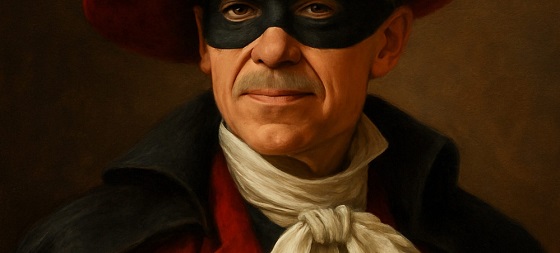
 2025 Federal Election1 day ago
2025 Federal Election1 day agoMark Carney: Our Number-One Alberta Separatist
-
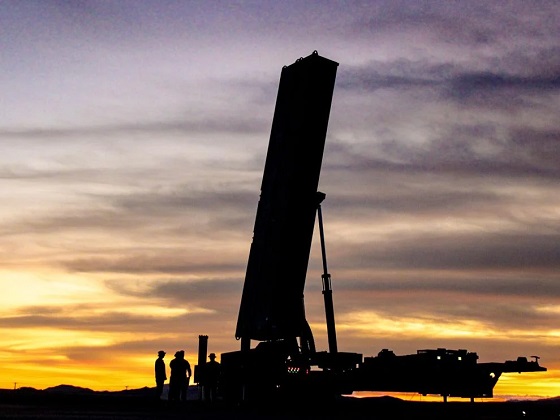
 International21 hours ago
International21 hours agoU.S. Army names new long-range hypersonic weapon ‘Dark Eagle’
-
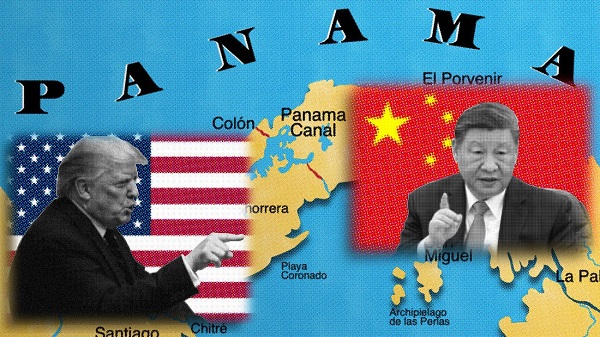
 Business21 hours ago
Business21 hours agoTrump demands free passage for American ships through Panama, Suez
-

 COVID-1911 hours ago
COVID-1911 hours agoFormer Australian state premier accused of lying about justification for COVID lockdowns
-
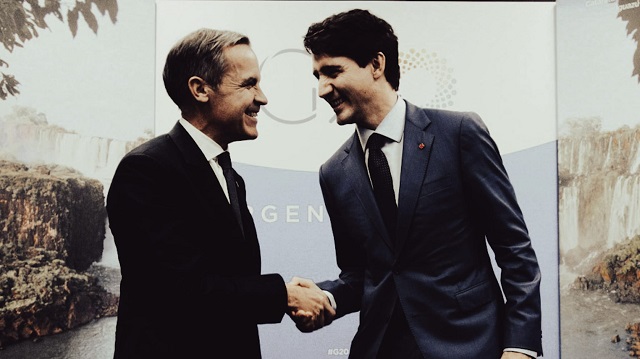
 2025 Federal Election1 day ago
2025 Federal Election1 day agoCanada is squandering the greatest oil opportunity on Earth



